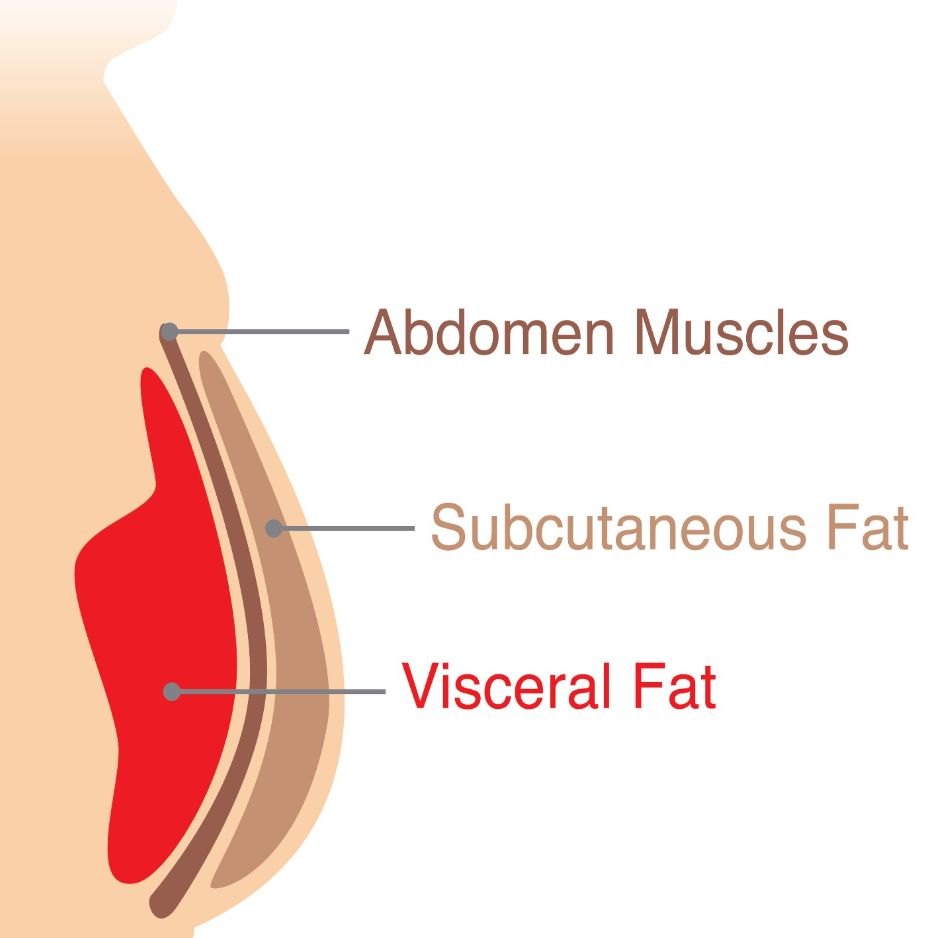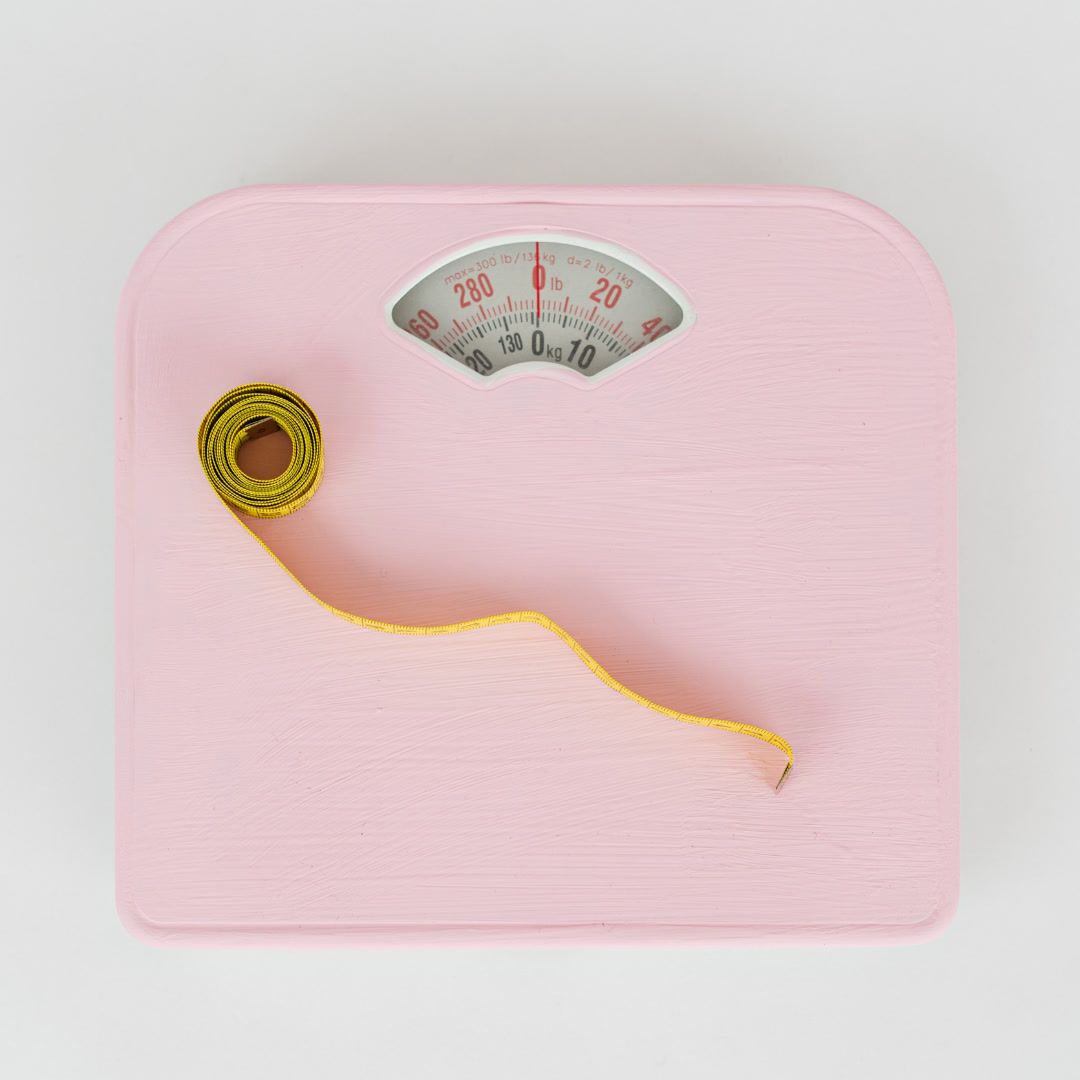Healthy Fast Food: How to Order Smarter at Top Chains
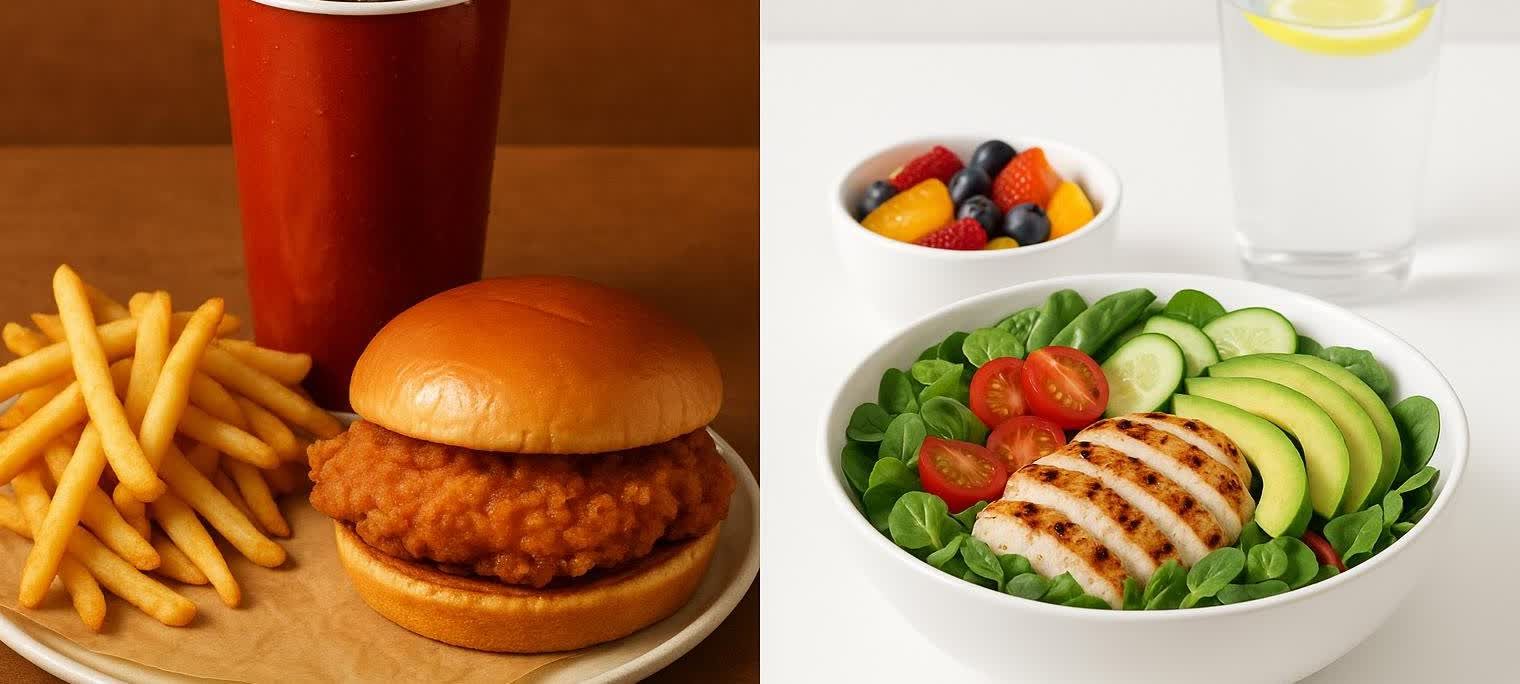
Healthy Fast Food: How to Order Smarter at Top Chains
Want a quick meal that won’t derail your goals? This healthy fast-food guide shows you how to build higher-protein, lower-calorie, lower-sodium orders at the biggest chains—without obsessing over every gram. You’ll get practical swaps, chain-specific tips, and a Chipotle example you can copy today.
Quick wins to steer by:
- Aim for 25–35 g protein per meal and include some fiber (veggies, beans) to stay full longer (see daily fiber ranges from the Mayo Clinic).
- Keep an eye on sodium. The American Heart Association recommendations suggest no more than 2,300 mg/day, with an ideal limit of 1,500 mg/day for most adults—and more than 70% of sodium comes from packaged and restaurant foods.
- Added sugar adds up in drinks and sauces. The Dietary Guidelines for Americans 2020–2025 advise keeping added sugars under 10% of daily calories.
How to Spot a “Healthy” Fast-Food Order (In 5 Minutes)
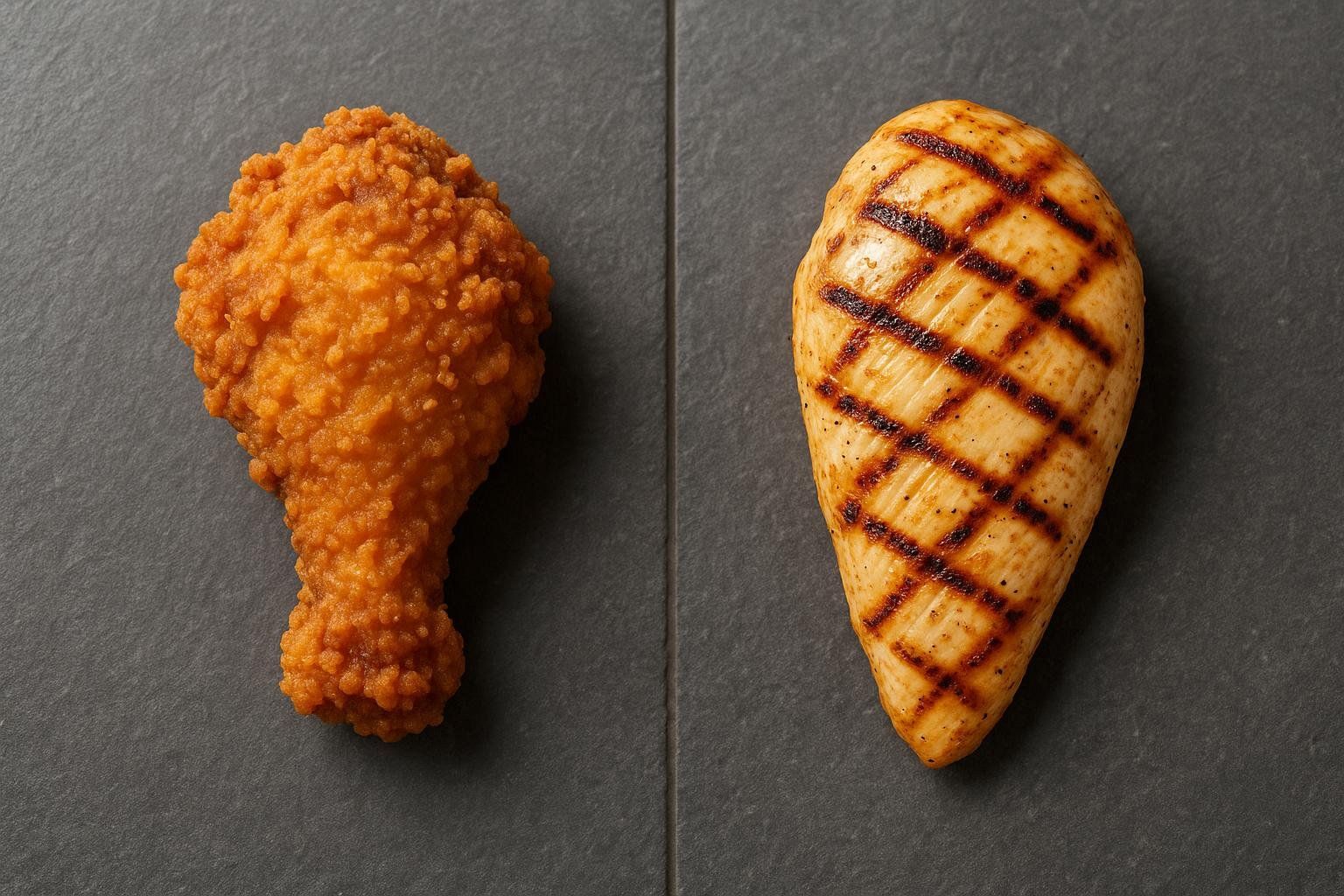
- Choose grilled or baked proteins over fried when possible.
- Load up on produce (lettuce, tomato, salsa, fajita veggies) and beans for fiber and fullness.
- Customize sauces and dressings: order on the side, go light, or skip creamy/mayo-based options.
- Pick simple sides (fruit cup, side salad, plain baked potato) over fries or cheesy add-ons.
- Use each chain’s nutrition calculator before you order to preview calories, protein, and sodium:
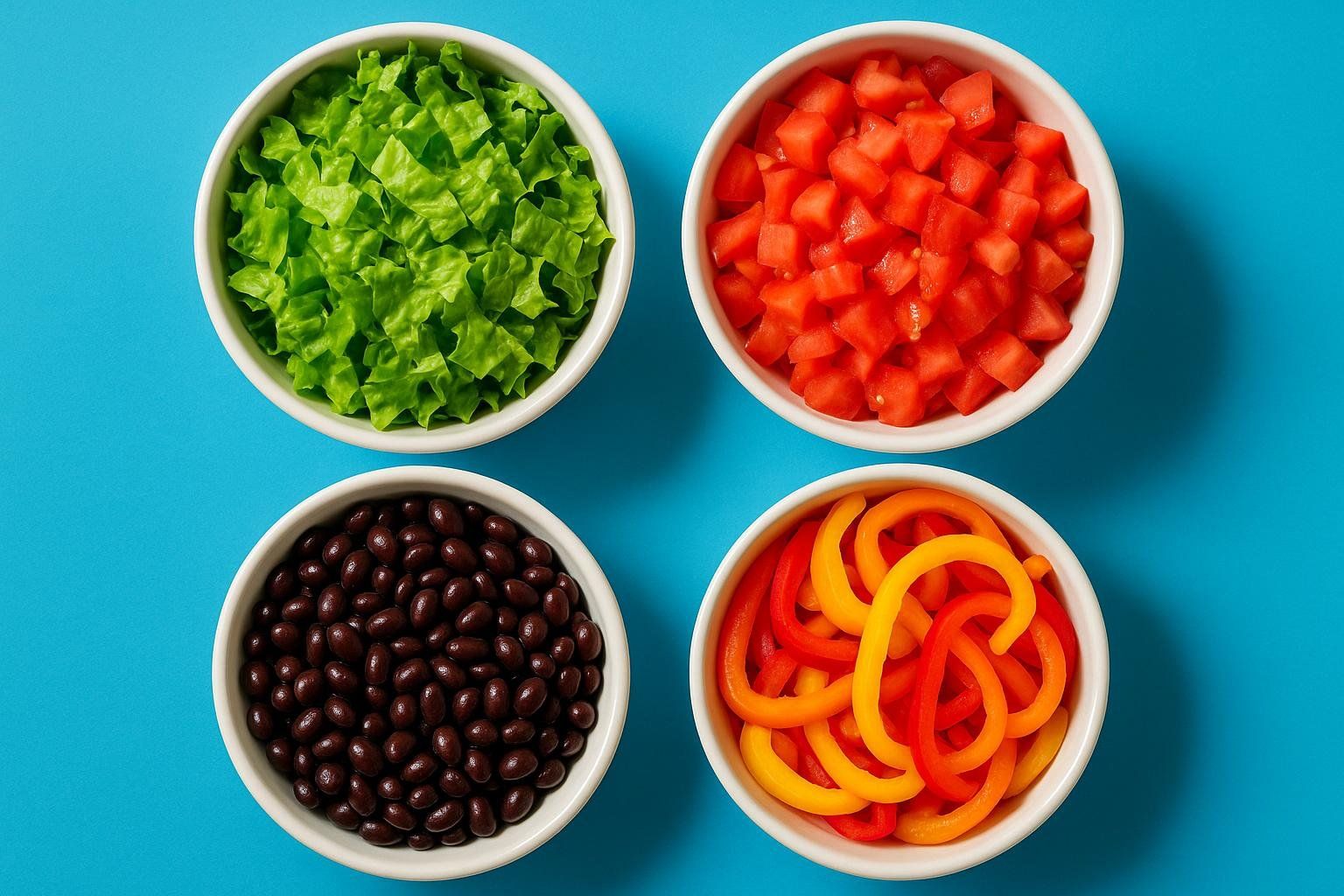
Setting Meal Targets for Your Goal
- Busy professional (10-minute lunch): ≤700 calories, ≥25 g protein, include at least one veggie.
- Fitness-focused (macro-aware): ≤600 calories, ≥30 g protein, prioritize lean protein + veg; go easy on added fats.
- Family on the go: kid-friendly entrée + fruit/veggie side; minimize added sugar; keep per-person meal cost reasonable with value menus.
Use our macro-tracking guide to dial in your numbers, and consider a DEXA scan to verify you’re losing fat—not muscle.
Chain-by-Chain Healthy Ordering Tips
Below are practical frameworks you can adapt at popular national chains. When in doubt, favor grilled protein, veggies, and lighter sauces. Use each brand’s calculator to confirm calories, protein, and sodium for your exact build.
Chipotle
Base bowl (per Chipotle’s calculator):
- Chicken (180) + Black Beans (130) + Fajita Veggies (20) + Fresh Tomato Salsa (25) + Romaine (5) → 360 calories.
Smart add‑ons (calorie impact):
- Cilantro‑Lime Rice (+210 calories)
- Cheese (+110 calories)
- Guacamole (+230 calories)
- Sour Cream (+110 calories)
- Queso Blanco (+120 calories)
Tips:
- Build for your macros: prioritize protein and fiber first, then add fats (cheese, guac) if calories allow.
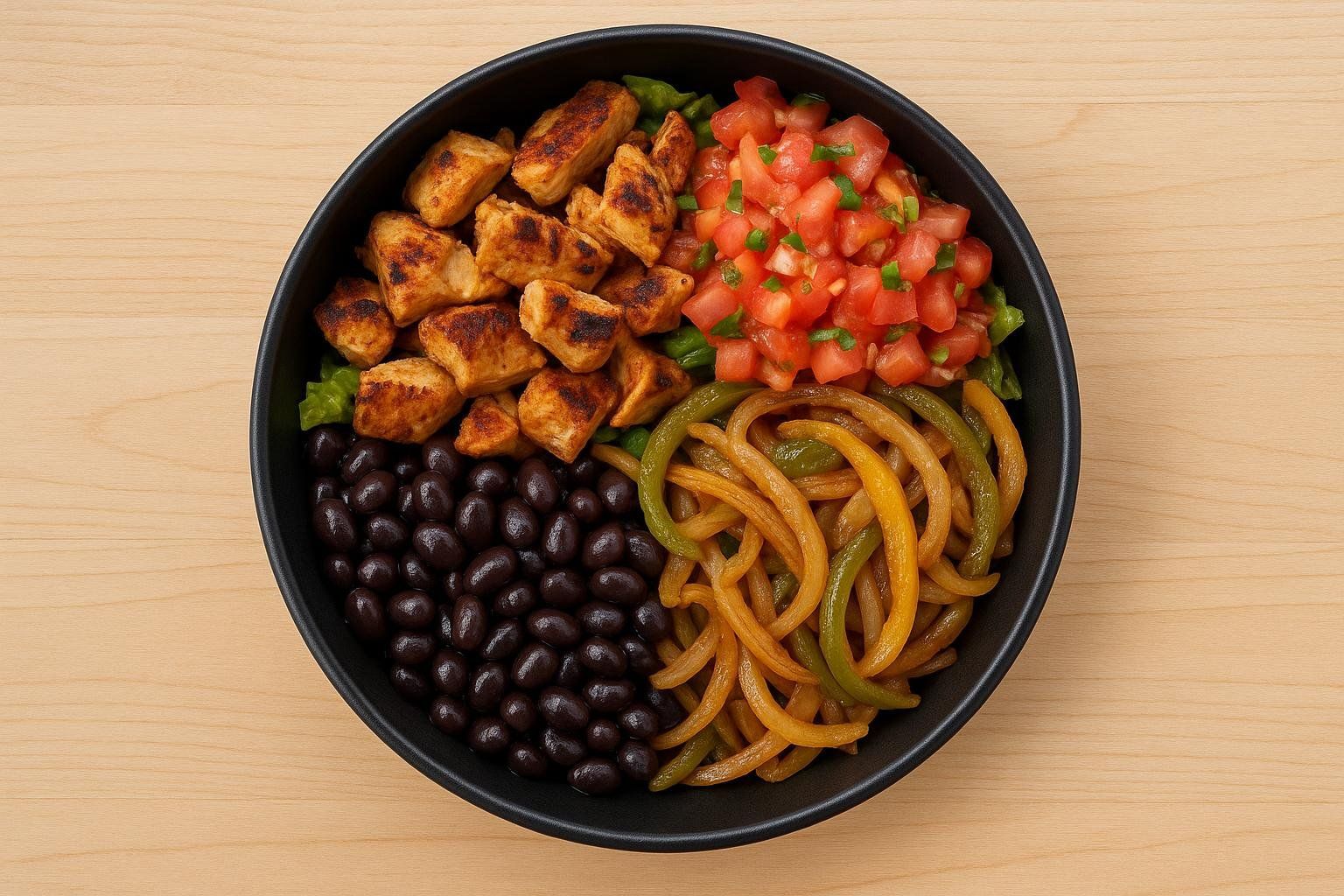
Source: Chipotle Nutrition Calculator.
Chick‑fil‑A
Example order:
- 8-count Grilled Nuggets (130 calories, 25 g protein) + Fruit Cup (60 calories) + Zesty Buffalo Sauce (25 calories).
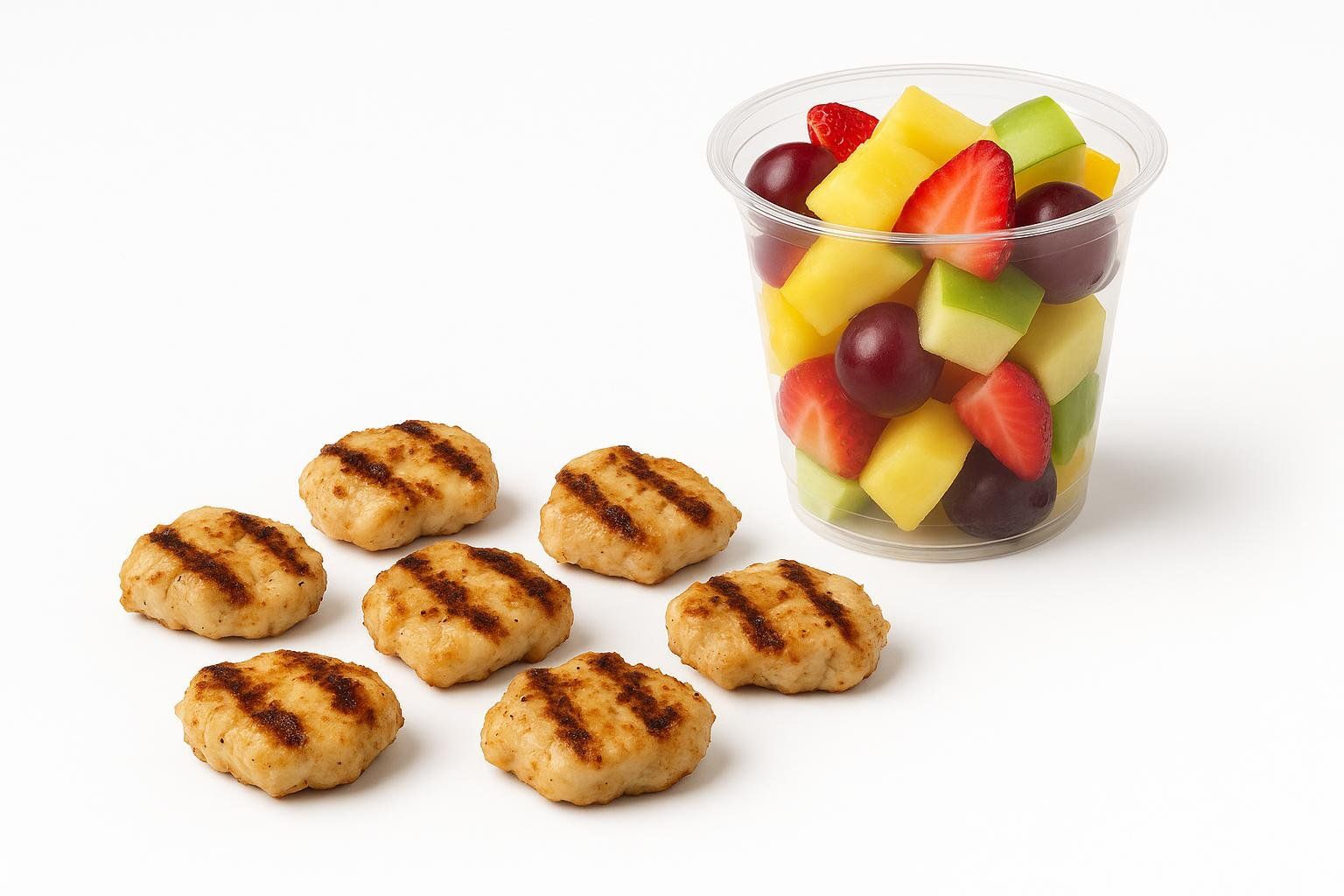
Tips:
- Grilled chicken is typically leaner than fried varieties; pair with produce-forward sides like the Fruit Cup or Kale Crunch Side.
- Ask for dressings and sauces on the side.
Source: Chick‑fil‑A Nutrition & Allergens.
McDonald’s
Example order:
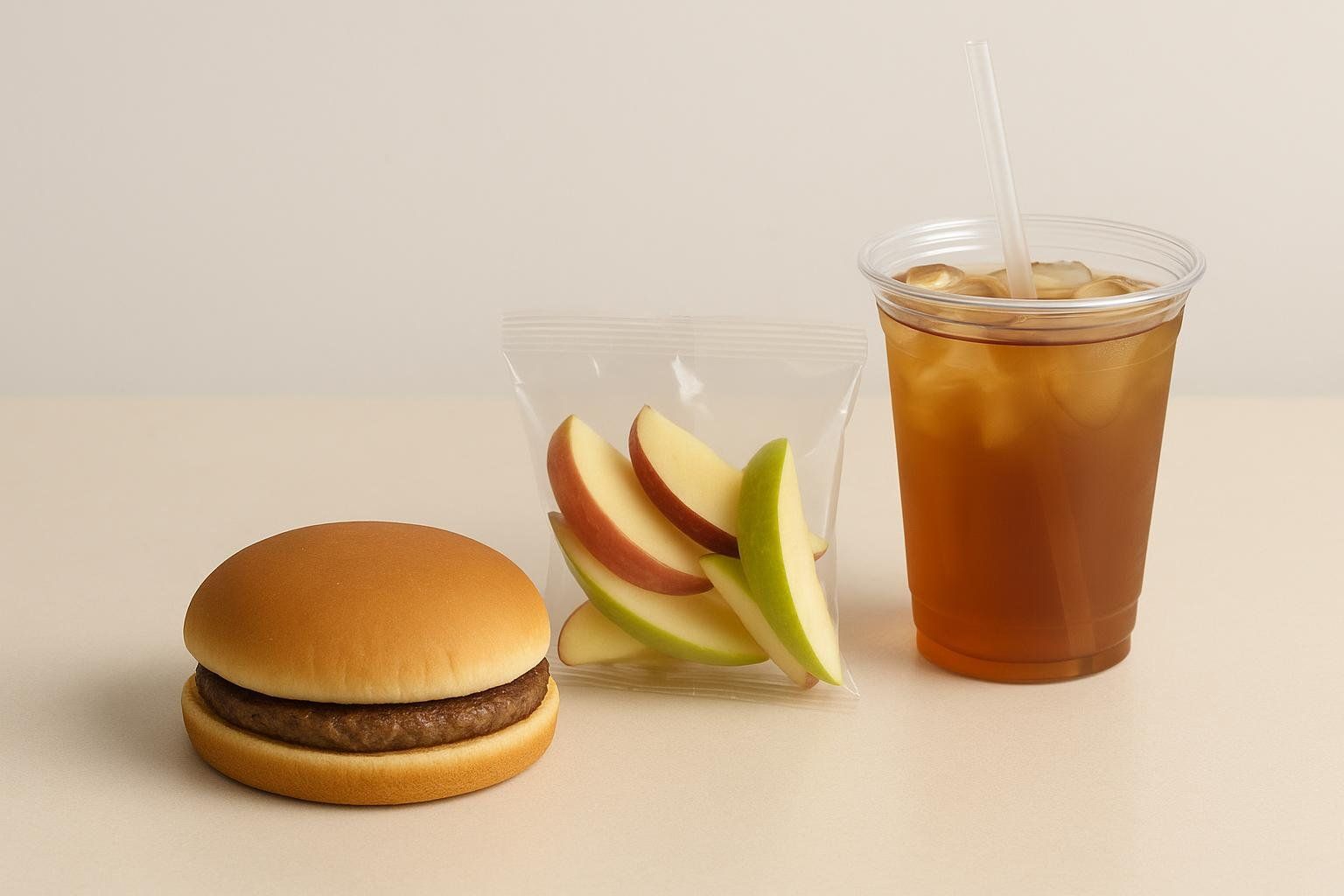
- Hamburger (250 calories, 12 g protein) + Apple Slices (15 calories) + Unsweetened Iced Tea (0 calories).
Tips:
- Use the nutrition calculator to compare options and remove extras (mayo, cheese) when you don’t need them.
- Consider smaller portions (single patties) and unsweetened beverages.
Source: McDonald’s Nutrition Calculator.
Taco Bell
Example order:
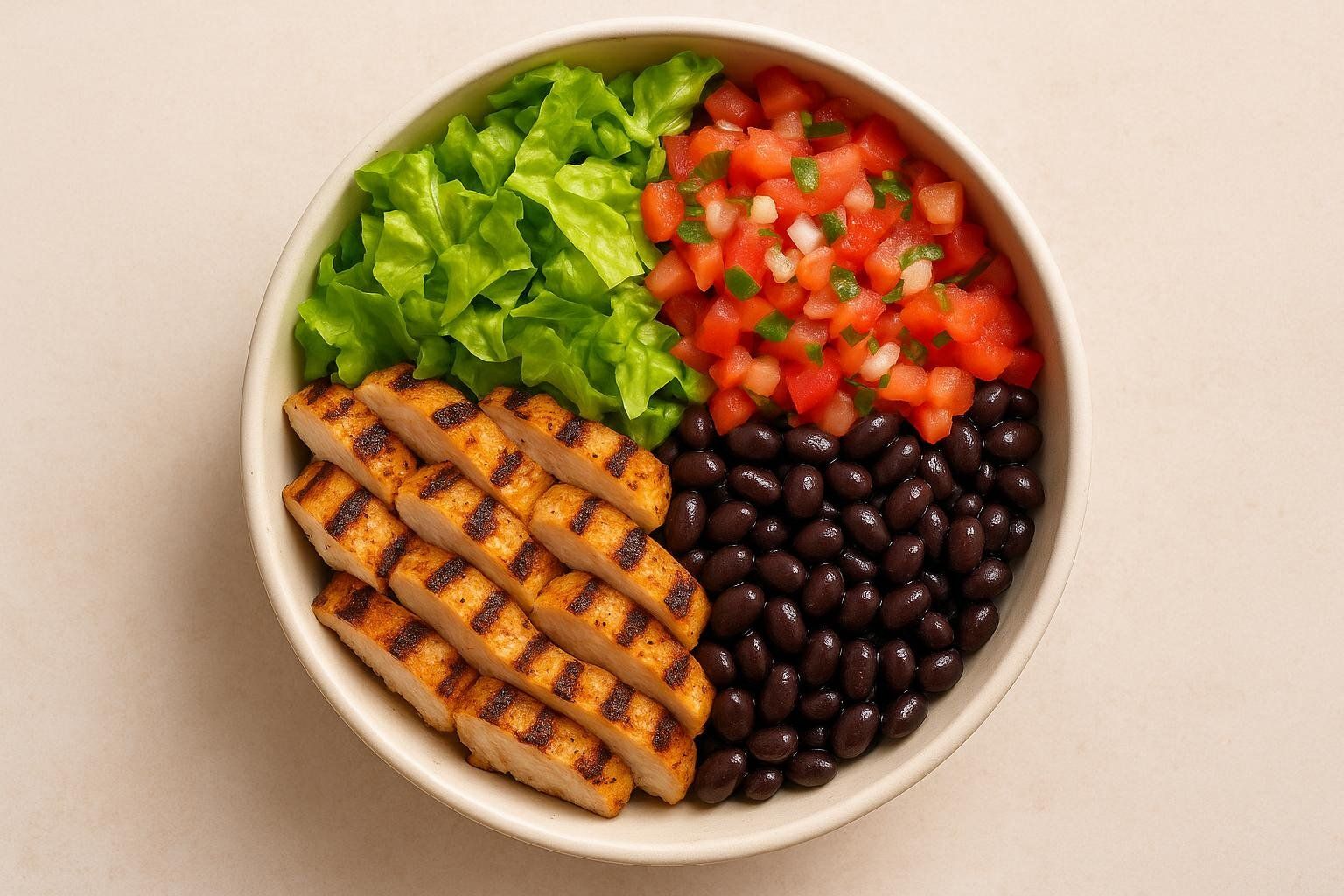
- Cantina Chicken Bowl (530 calories, 25 g protein), hold extra sauces; or Veggie Bowl (410 calories).
Tips:
- The nutrition calculator lets you customize and immediately see calories and sodium.
- Choose items with beans, lettuce, tomato, and pico; limit creamy sauces and extra cheese.
Source: Taco Bell Nutrition Calculator and Cantina Chicken Bowl page.
Wendy’s
Example order:
- Caesar Chicken Salad (411 calories, 28 g protein) + Plain Baked Potato (232 calories).
Tips:
- Use lighter dressings and go easy on cheese and bacon add-ons.
- Value menu junior items can help with portion control.
Source: Wendy’s Core Menu Nutrition (PDF).
Subway
Example order:
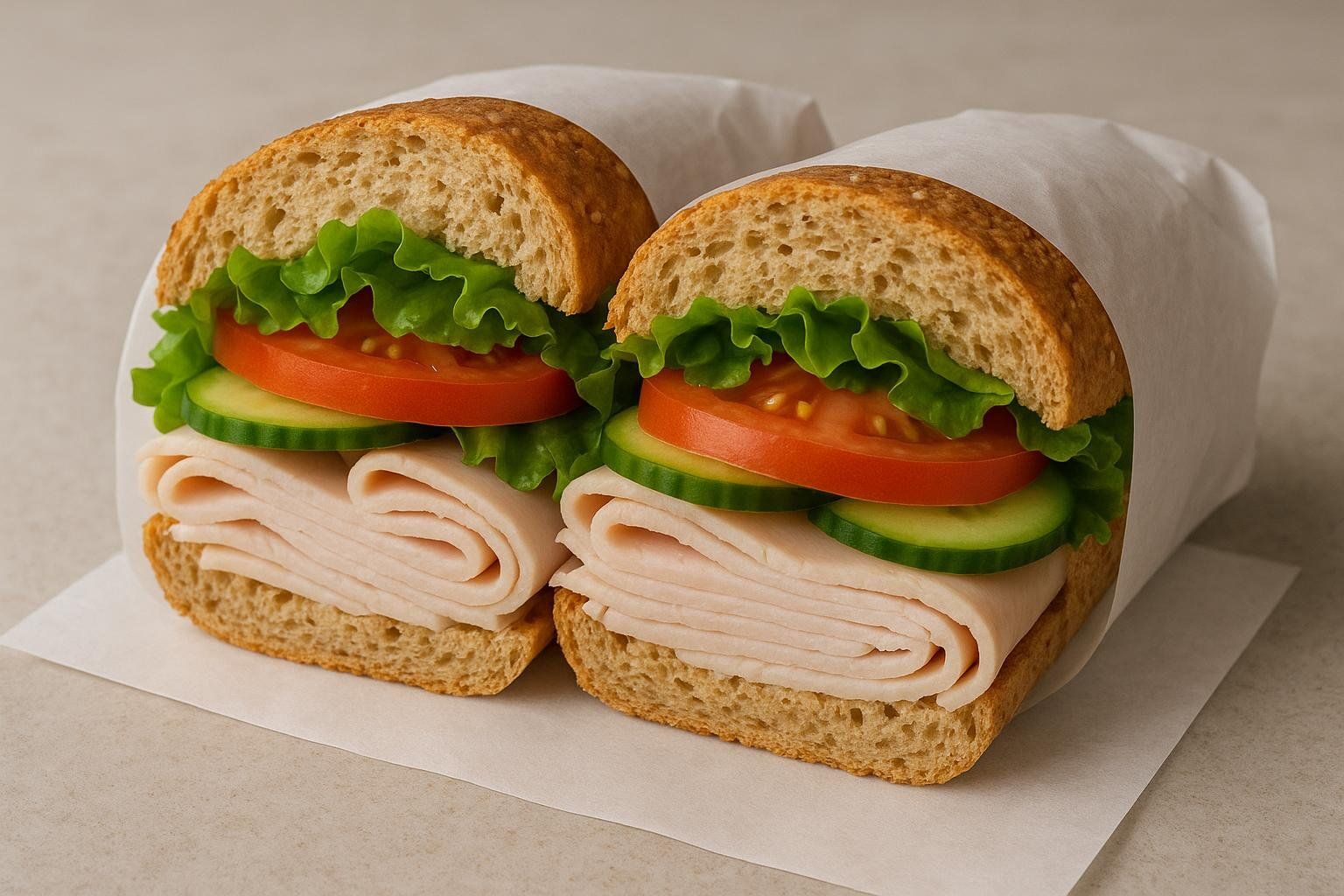
- 6" Turkey Breast on 9‑grain wheat with lettuce, tomato, cucumber, green pepper, and yellow mustard (no cheese, no mayo): 330 calories, 24 g protein.
Tips:
- Choose whole‑grain bread when available and opt for lean proteins.
- Ask for mustard or vinegar instead of mayo; add extra veggies for volume and fiber.
Source: Subway Nutrition & Allergies.
Panera
Example order:
- Fuji Apple Chicken Salad (560 calories, 33 g protein) + cup of Chicken Noodle Soup (~100–160 calories); swap chips for an apple.
Tips:
- Soups and salads vary widely; choose broth‑based soups and salads with lean protein.
- Swap creamy dressings for vinaigrettes and ask for dressing on the side.
Source: Fuji Apple Chicken Salad page and Panera Allergen & Nutrition.
Starbucks (Drinks & Quick Bites)
Example order:
- Grande Americano with a splash of milk (15 calories) + Eggs & Cheddar Protein Box (460 calories, 22 g protein).
Tips:
- Prioritize unsweetened options and ask for fewer syrup pumps or sugar‑free.
- Yogurt with fruit or a protein box can be better than pastry by default.
Source: Starbucks Menu & Nutrition and Eggs & Cheddar Protein Box.
“Sauce Math” and Hidden Add‑Ons
- Dips and dressings can add 100–200 calories in seconds.
- Ask for “sauce on the side,” taste first, then portion what you need.
- Favor salsa, mustard, hot sauce, and vinaigrettes over creamy options.
Order Builder: Plug-and-Play Templates
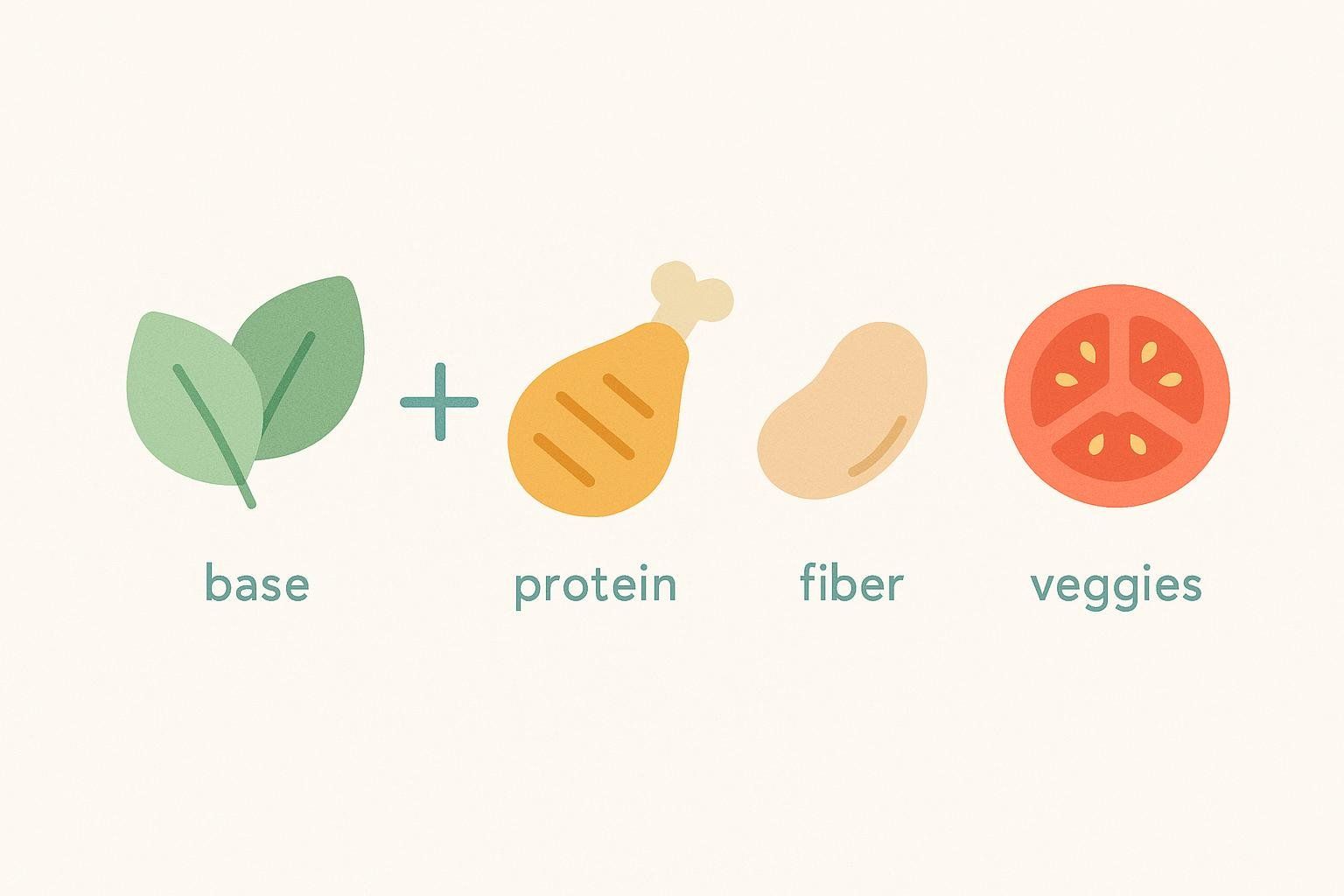
Use these templates at almost any chain.
- High‑protein bowl/salad: base of greens or lettuce + grilled chicken/steak/tofu + beans (or edamame) + salsa/veggies + vinaigrette on the side.
- Lean sandwich/wrap: grilled protein + extra veggies + mustard/vinegar; skip creamy sauces; add a fruit/veg side.
- Breakfast: egg‑based sandwich or bowl + fruit; skip sugary beverages.
For more food ideas, browse our high‑protein, low‑carb list, set a realistic daily fiber target, and curb cravings with these strategies for stopping sugar cravings.
